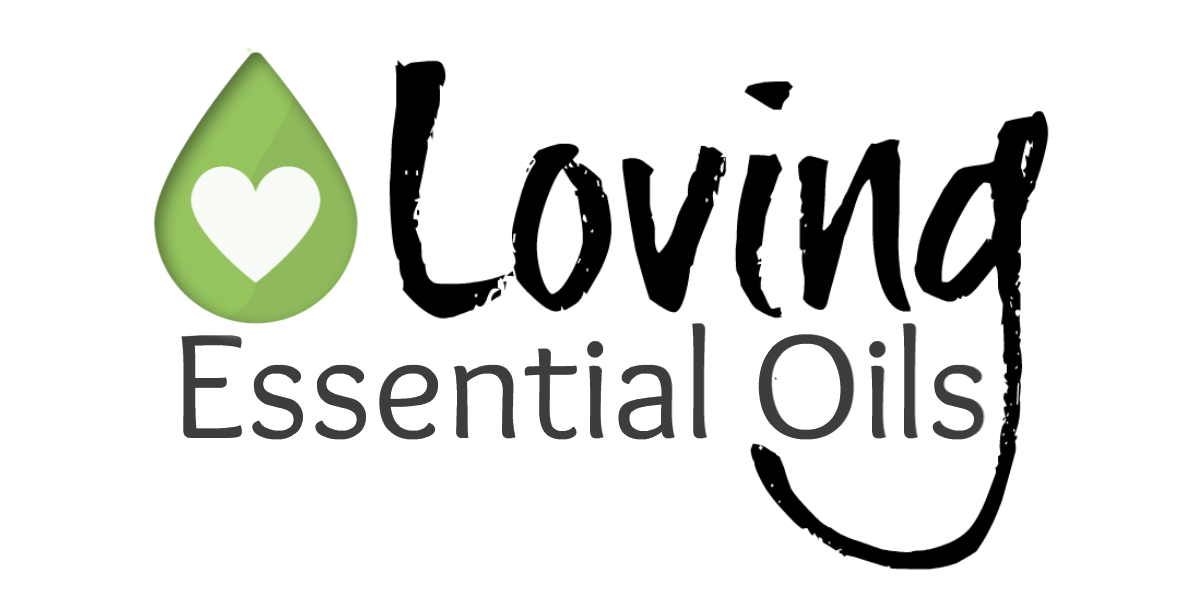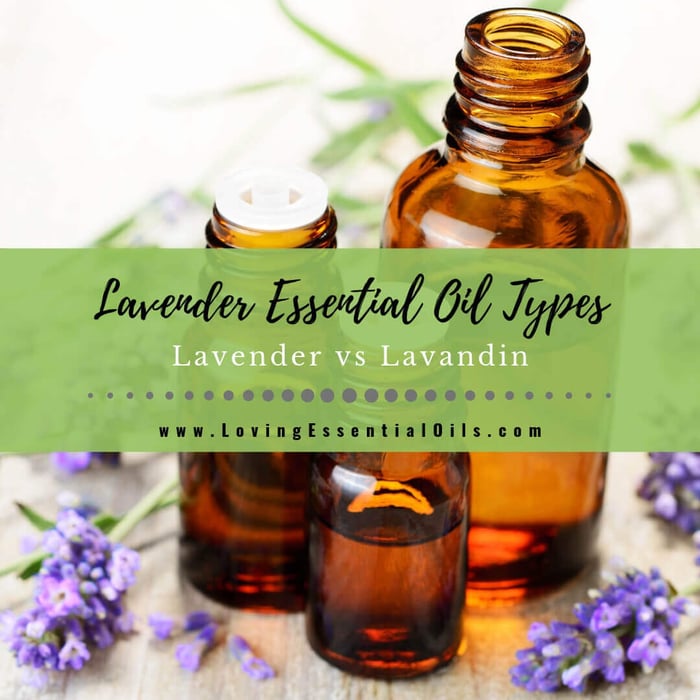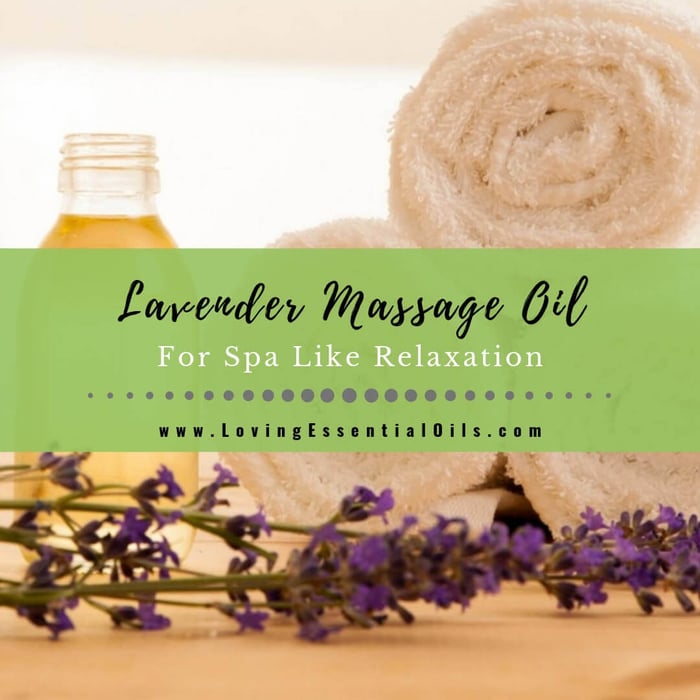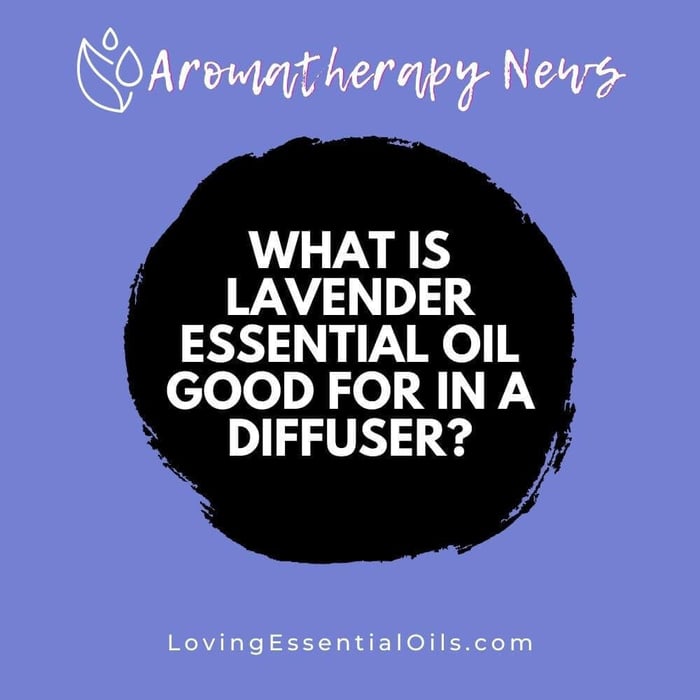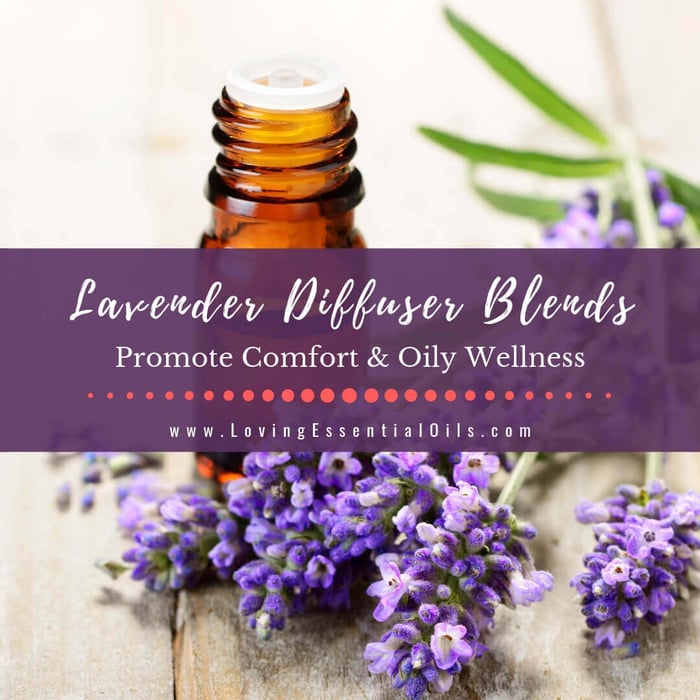Table of Contents
- For the Love of Lavender Oil
- History of Lavender
- Lavender Essential Oil Overview with Variations
- Lavender Essential Oil (Lavandula angustifolia)
- Spike Lavender Essential Oil (Lavandula latifolia)
- Lavandin Essential Oil (Lavandula x intermedia)
- Lavender vs Lavandin - What are the Differences?
- Choosing the Right Lavender Essential Oil
- Conclusion on Different Types of Lavender Essential Oils
- All About Lavender Essential Oil Recipes and Uses
The first essential oil I fell in love with was lavender. It is one of the most popular and widely used oils in aromatherapy. But did you know that they are different types of lavender essential oil?
I have so much respect for this healing oil and the plant species the oils come from. Several years ago, I even planted some lavender in my backyard so I could enjoy the beautiful flowers and fragrance.
For the Love of Lavender Oil
I initially started using essential oils to fulfill a desire to use only natural remedies for everyday issues my family encountered, instead of over the counter medications.
One thing that made me fall in love with lavender oil is its versatility. When my children come to me with an ailment or complaint, lavender essential oil is the oil I most frequently grab or recommend.
It is the oil I use more than any other essential oil, and I especially love adding it to oil blends I make. You can read more about what I love to mix with lavender oil here.
When I first started using essential oils, I had no idea that there were different lavender essential oil types available on the market. I assumed all lavender oils were the same, but I was wrong.
I will share the three most common lavender essential oil varieties used in aromatherapy, and how they compare to one another. But first, let's look at the history of lavender.

History of Lavender
Whether in the form of essential oils or as a flower (dried or fresh), lavender has a long history of use. Dried lavender flowers have been used in herbal remedies, teas, tinctures, potpourri, flower arrangements, dream pillows, and drawer sachets.
The tough and resilient nature of lavender has been prized by many cultures, not only for its beautiful fragrance, but also its medicinal uses.
Ancient Egyptians would use lavender in the mummification process and as perfume. Romans added lavender to scent their bathwater.
In fact the name Lavender comes from the Latin word lavare, meaning “to wash”. In Victorian times, lavender was used to revive women that had fainted from wearing tight corsets.
In aromatherapy, lavender is considered one of the most versatile and useful essential oils for holistic healing.
Patricia Davis in her book Aromatherapy: An A-Z explains:
“Perhaps the most important property of Lavender oil is its ability to restore unbalanced states – whether of mind or body – to that state of balance in which healing can take place”.
Dr. Jean Valnet, a French army surgeon, used lavender oil to treat war injuries and burns. Rene-Maurice Gattefosse, a French chemist and perfumer, had a personal experience with the healing properties of lavender which lead him to deeper essential oil research.
In recent times, there has been research and studies done on lavender, but they may be lacking. The National Center for Complimentary and Integrative Health suggests, “Many studies have investigated lavender’s effectiveness for a number of conditions, such as pain, anxiety, stress, and overall well-being, but several were small and of poor quality”.
Lavender Essential Oil Overview with Variations
Lavender comes from the lamiaceae (labiatae) plant family. It is cherished for its lovely floral fragrance.
The three main lavender plant species used most in aromatherapy are Lavandula angustifolia, Lavandula latifolia and Lavandula x intermedia. The type of lavender essential oil that is most common in aromatherapy is Lavandula angustifolia.
The plant names help to describe the variety. As Jeanne Rose puts it in here book 365 Essential Oils and Hydrosols, “Knowing the name of something and what it means will provide clues and tools to aid you in your plant research.” She shares that intermedia means in-between, angustifolia means narrow-leaved, and that latifolia means leaves on the side.
Lavender essential oil comes from flower buds of the different species. Usually the flower buds are steam distilled to create the essential oil.
Lavender oil is generally non-irritating and non-sensitizing. It is safe and effective for children as well, who tend to be more sensitive to essential oil than adults.
This gentle oil is frequently used in perfumes, soaps, deodorants, and household products.
Lavender essential oil varieties differ in chemical constituents, aroma, and therapeutic properties. These variations are largely in part of the location and conditions of where they are grown.
It is important to read the label to note the Latin name when purchasing lavender oil to ensure you know what you are buying.

Lavender Essential Oil (Lavandula angustifolia)
The classic lavender known in aromatherapy is distilled from the flowers of Lavandula angustifolia. This species of lavender is also known as English Lavender, True Lavender, Common Lavender, or Narrow-leaf Lavender.
It is native to the Mediterranean but now is cultivated all over the world. This type of lavender oil is commonly sourced from Bulgaria and Greece.
The aroma can vary, depending on the country of origin but this variety has a sweet, floral, herbaceous scent. It comes from an evergreen woody shrub with narrow leaves and violet-blue flowers. The whole plant is very aromatic.
There are over 100 constituents in this species; the main constituent is linalyl acetate, up to 40%.
While the exact chemical structure will vary due to several factors, some additional constituents are linalol, lavandulol, lavanduyl acetate, terpineol, cineol, limonene, ocimene, and caryophyllene.
According to The Complete Book of Essential Oils and Aromatherapy by Worwood, the therapeutic uses for true lavender are:
“Inflammatory conditions, skin infections, wounds, cuts, grazes, rashes, itching, stress-related eczema, nervous psoriasis, sunburn, burns, muscular cramp, headache, migraine, insomnia, nervousness and related conditions, acne, pimples, insect bites, stress, tension, anxiety, panic; insect deterrent”
Spike Lavender Essential Oil (Lavandula latifolia)
Spike lavender is distilled from the flowers of Lavandula latifolia. This species of lavender is also known as Broad-leaf Lavender, Lesser Lavender, or Aspic.
It comes from a shrub with broader leaves than true lavender. Spike lavender has dull greyish-blue flowers that are more compressed.
It is found along the Mediterranean coast at altitudes of up to 800 meters. Spike lavender oil is clear to pale yellow in color. It is mainly produced in France and Spain.
The aroma is fresh, floral with herbaceous and camphoraceous notes. Unlike other lavenders, spike lavender’s penetrating aroma tends to be more stimulating and head-clearing.
The main constituents found in spike lavender are cineol and camphor (40-60%), with linalool and linalyl acetate.
According to The Complete Book of Essential Oils and Aromatherapy by Worwood, the therapeutic uses for spike lavender are:
“Muscular aches and pains, muscular spasm, muscular injuries, migraine, catarrh, bronchial congestion, headaches, pimples, rashes, nervous tension, insect bites”
Lavandin Essential Oil (Lavandula x intermedia)
This species of lavender, called Lavandin, developed due to insect pollination. Lavadin, Lavandula x intermedia, is a hybrid of Lavandula angustifolia and Lavandula latifolia. The plant is usually larger than True Lavender. Due to its hybrid nature, the flowers will vary between blue to greyish.
Lavandin has the characteristic sweet, floral, woody aroma with a sharp camphoraceous note. This oil has a pale to yellow color. One reason this oil is popular is that it has twice the oil yield of True Lavender, making it less expensive and a great alternative option.
75 years ago, Lavandin only existed in the wild, today it cultivated due to its hardy nature and high yield (Lawless, Lavender Oil, 1994). It is mainly produced in France.
Main constituents include linalyl acetate at 30-32%, linalool, cineol, camphene, and pinene (Lawless, The Encyclopedia of Essential Oils, 2013). Compared to True Lavender, Lavandin contains more camphor and has less sweet scented flowers.
According to The Complete Book of Essential Oils and Aromatherapy by Worwood, the therapeutic uses for Lavandin:
“Skin infection, wounds, menstrual cramp, muscular spasm, muscular injuries, migraine, stress, tension, respiratory tract infections, rashes, pimples, acnes, nervous tension, pain relief” (Worwood, 2016).
Lavender vs Lavandin - What are the Differences?
True lavender naturally grows at high altitudes, while spike lavender naturally grows at low altitudes. The growing areas between where these two types meet is where Lavandin is found. These variations in growing conditions affect their chemical constituents.
All three of the lavenders discussed contain linalool as one of their main chemical components. This constituent can be anti-bacterial, anti-fungal, analgesic, and anti-inflammatory. Linalool is also a nervous system tonic, giving lavender its calming and relaxing action.
True Lavender Oil
True lavender essential oil (Lavandula angustifolia) tends to be the oil most desired for aromatherapy. If one was looking to invest in a bottle of lavender, this type would be the best choice overall. Its diverse chemical makeup offers the greatest therapeutic value. It is the oil that other lavenders are measured against.
The aroma of true lavender essential oil has a more fragrant floral scent compared to the other varieties. This well-known scent is frequently sought after in perfumery.
Lavandin Oil
Lavandin essential oil has an herbaceous aroma. Its therapeutic properties are similar, but do not measure up to true lavender. This type of lavender tends to be a cost effective choice. It is also frequently used in soap making, lotions, and cleaning products.
Spike Lavender Oil
Spike lavender essential oil has a large amount of camphor and cineol, making it a popular choice for respiratory ailments and pain relief. The aroma is sharp and more medicinal and camphoraceous than true lavender. Spike lavender is also more stimulating than other lavenders and some may find it best to use during the day time.
Essential Oil Guide for Beginners - Getting Started
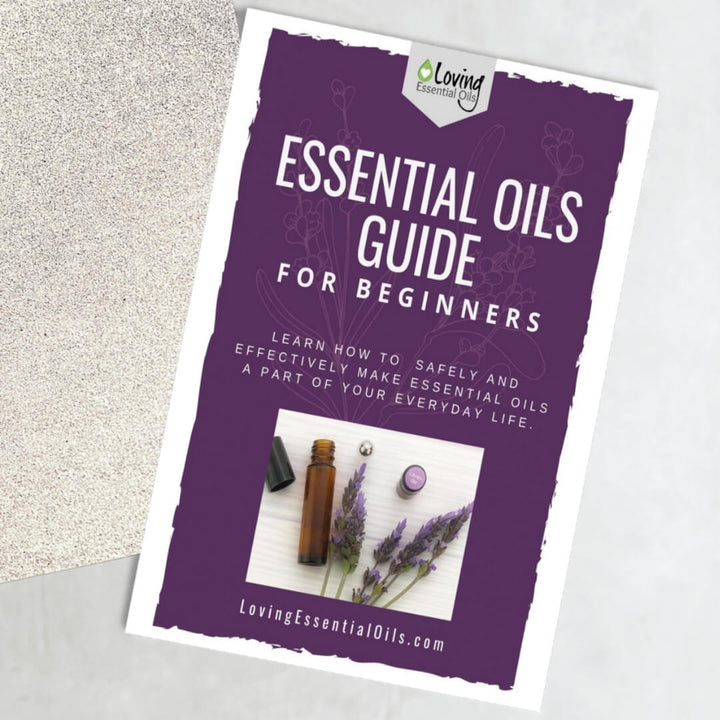
$ 5.99
Beginner's Essential Oil Guide - Download/Printable Learn how to safely and effectively make essential oils a part of your everyday life. Everything you need to know about essential oils. If you have ever been around anyone who loves using essential… Read More
Choosing the Right Lavender Essential Oil
When choosing a lavender essential oil, it's important to look for high-quality essential oils to ensure that they are free from harmful chemicals and pesticides.
It's also important to consider the intended use of the lavender essential oil when choosing which type to purchase. For example, if you're looking for an essential oil with strong antiseptic properties for cleaning purposes, lavandin essential oil may be a better choice than true lavender essential oil.
On the other hand, if you're looking for an essential oil with calming properties for relaxation or aromatherapy, true lavender essential oil would be a great option.
Conclusion on Different Types of Lavender Essential Oils
True lavender oil is the number one essential oil that I recommend to friends and family members that show an interest in aromatherapy. I think it is the perfect starting oil for beginners due to its gentle nature and versatility. It can be used for skin care, household cleaning, body and mind imbalances, and natural remedies for everyday aliments.
One of my favorite ways to enjoy lavender oil is through diffusion. It helps to uplift my mood and ease my stress. Lavender also tends to blend well with just about any other oil.
As Patricia Davis suggests, “…for lavender is not only enhanced in its action by being mixed with other essential oils, but also heightens the action of any oil with which it is mixed”.
While the lavender essential oil variety chosen will depend largely on one’s personal preference on desired aroma and therapeutic benefits, all varieties of lavender oil can help with holistic healing. No matter what type is chosen, favorable results are sure to be gained.
Share on Pinterest

All About Lavender Essential Oil Recipes and Uses
Lavender oil has many therapeutic benefits, including reducing anxiety and stress, improving sleep quality, and easing sore muscles. There are several therapeutic benefits of lavender oil and ways to use it safely and effectively. Here are a few recipes and uses for adding lavender oil to your everyday life.
